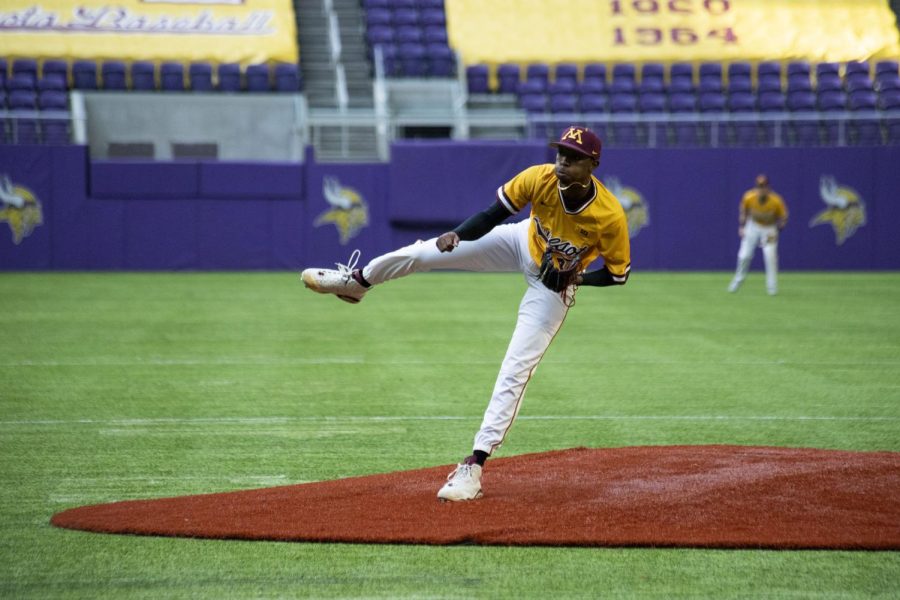In May of 2021, the Gopherwatch Monthly Safety Report recorded 11 aggravated assaults, 12 burglaries, 12 burglaries from a motor vehicle, 15 robberies, 15 motor vehicle thefts and 76 thefts for the Marcy-Holmes neighborhood (including Dinkytown). Prospect Park (including Stadium Village) experienced 24 thefts, among other crimes. And that was just in the month of May.
It took University of Minnesota students receiving nonfatal gunshot wounds while waiting to enter an off-campus bar for President Gabel to acknowledge the crime crisis around campus. Given that it took so long, I’d like to walk through her administration’s response to the extreme rise in crime faced by the campus community.
Immediate steps outlined in Gabel’s June 21 email include making Minneapolis Police Department officers more visible at night, with a greater number of officers assigned to the area and more cameras installed. Long-term solutions include increased patrols, cameras, “Blue Light” kiosks and a safety ambassador program.
When talking about these plans, Gabel’s email was carefully worded to avoid a guarantee of any of these long-term initiatives actually being implemented. At the risk of sounding like an overly analytical high school essay, the liberal usage of “evaluate,” “analyze” and “examine” in place of “complete,” “implement” or “fund” leave the impression that Gabel is leaving herself a little too much room to backtrack.
With that being said, there are more issues with the short- and long-term solutions than the verbiage. Blue light kiosks are essentially useless — I have never heard of a student actually using one, though I don’t doubt they promote a facade of increased security. They are expensive to implement and to maintain. Most students carry personal cell phones these days, many of which have technology to make emergency calls easily accessible.
Increasing police presence, on the other hand, is a double-edged sword, and not in the way you might think. It actually does deter violent crime, but it doesn’t lead to an increase in arrests for said crimes. Essentially, the threat of getting caught is often enough of a crime deterrent. However, these positive statistics also decrease in cities with large Black populations, playing into the narrative that communities of color are simultaneously over and under policed. The University has a prominent student activism community, with many whom have had negative experiences with the MPD. There was no acknowledgement of the violent and all too recent past of MPD, or of last year’s decision to separate UMPD from MPD, made in Gabel’s email.
Increasing police presence must be a placeholder for effective, long-term change. As it stands, the suggestions made by the Gabel administration rely on lessening the symptoms, not solving the root cause. Crime in our community is not the issue of the University alone, but it would be foolish to ignore the immense influence the administration has. Lobbying for increased gun control is one step towards prevention. Beyond the obvious gun usage in recent shootings, many students have been robbed while being threatened with a weapon. In 2020, Minnesota earned a C+ for gun control due to a lack of firearm licensing and registration, as well as no lost or stolen firearm reporting. Public institutions do actually have a decent amount of freedom when it comes to lobbying and are subject to fewer regulations than their private counterparts.
I’ve lived in Dinkytown for the duration of my college career. I can tell you first hand that the atmosphere has changed dramatically. As a first year student, my friends and I were rarely concerned about our safety during the day, and harbored the reasonable concern most young women are trained to have once night fell. This past year, living mere blocks from my freshman dorm, I witnessed a fatal shooting from my apartment window. My friends and peers have been robbed, assaulted, carjacked and more. President Gabel’s response to the dramatic change in the off-campus environment is inadequate. Accessible education is not just need-based scholarships and retrofitting buildings — it includes ensuring that students are not putting themselves in danger by living close to campus. Increasing police presence is not a long-term answer: Only prevention efforts will restore the campus environment to a semblance of its former self.


















